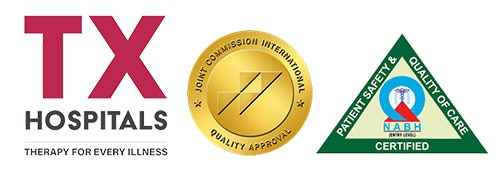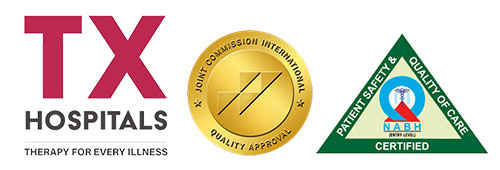Best Continuous Renal Replacement Therapy Procedure In Hyderabad
Continuous Renal Replacement Therapy (CRRT) is a medical treatment used to manage acute kidney injury (AKI) in critically ill patients. It is a form of renal replacement therapy (RRT) that continuously removes waste products, excess fluids, and electrolytes from the blood while maintaining stable blood pressure and acid-base balance. CRRT is typically used in intensive care units (ICUs) and is delivered through a machine that filters the patient’s blood continuously over a prolonged period of time.TX Hospitals had best surgeons for renal replacement therapy in Hyderabad.
CRRT works by using a hemofilter to remove waste products and excess fluids from the patient’s blood. The hemofilter is a membrane that allows small molecules to pass through while retaining larger molecules like proteins and blood cells. The blood is drawn from the patient’s artery or vein and passed through the hemofilter where it is cleaned and returned to the patient’s body. The rate of blood flow and the ultrafiltration rate (the rate at which fluid is removed from the blood) can be adjusted based on the patient’s needs.
CRRT is typically prescribed for patients with AKI who are unable to tolerate other forms of RRT, such as hemodialysis or peritoneal dialysis. Patients who are critically ill and have hemodynamic instability or who require mechanical ventilation may benefit from CRRT. The treatment can be delivered continuously for up to 24 hours a day, providing a more gentle and gradual removal of waste products and excess fluids than intermittent hemodialysis.
There are several types of CRRT
- Continuous venovenous hemofiltration (CVVH)
- Continuous venovenous hemodialysis (CVVHD)
- Continuous venovenous hemodiafiltration (CVVHDF)
Each type of CRRT differs in the amount of solute clearance, fluid removal, and electrolyte balance achieved. The choice of CRRT modality depends on the patient’s individual needs and the availability of equipment.
CRRT requires specialized equipment and trained healthcare professionals to manage the treatment. The patient’s blood pressure, fluid and electrolyte balance, and metabolic status must be closely monitored throughout the treatment to prevent complications such as hypotension, hypokalemia, or metabolic acidosis.
Conclusion:
CRRT is a continuous form of renal replacement therapy used to manage AKI in critically ill patients. It uses a hemofilter to remove waste products, excess fluids, and electrolytes from the blood while maintaining stable blood pressure and acid-base balance. CRRT is delivered through a machine that filters the patient’s blood continuously over a prolonged period of time and requires specialized equipment and trained healthcare professionals to manage the treatment. The choice of CRRT modality depends on the patient’s individual needs and the availability of equipment.







